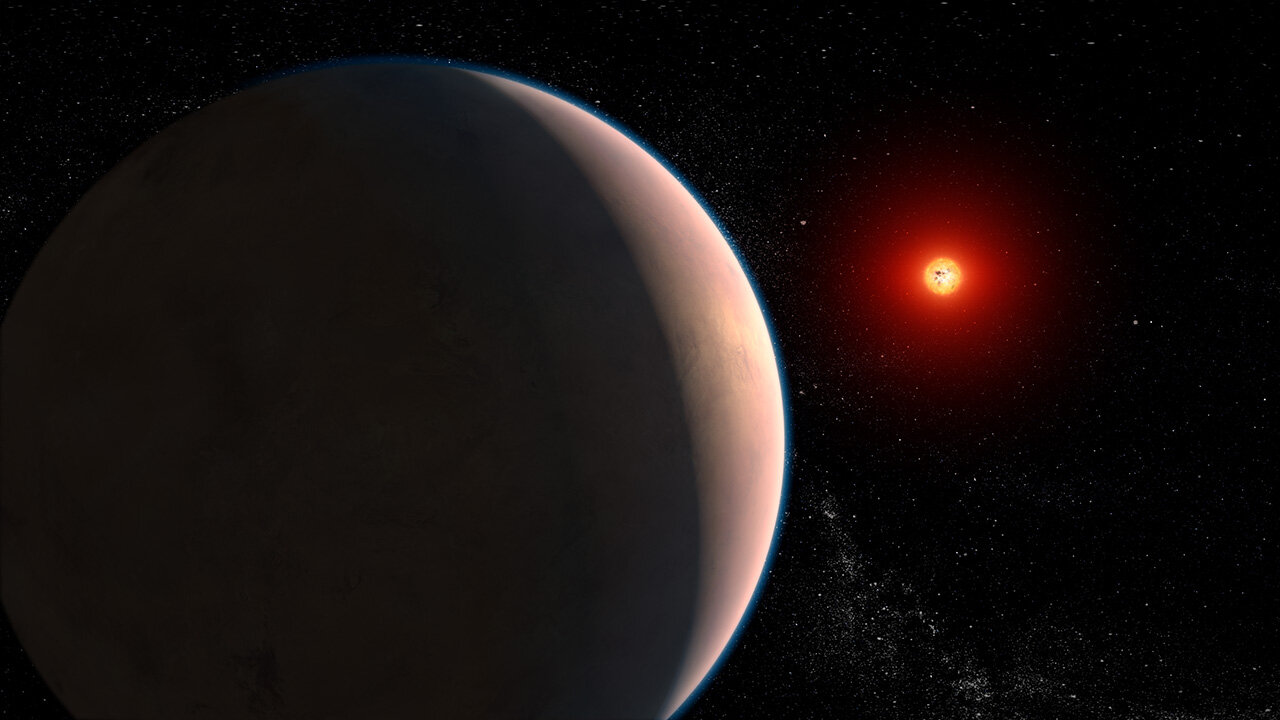The James Webb Space Telescope is conducting spectroscopic studies of the exoplanet GJ 486b. They showed the presence of water vapor. But scientists can not understand in any way whether it is in the atmosphere of this celestial body, or on the star around which it orbits.

Spectroscopic studies of the planet GJ 486 b
Scientists working with the James Webb Space Telescope recently reported on the results of a spectroscopic study of an exoplanet orbiting the star GJ 486. This luminary is located at a distance of 133 light-years from us. It is a typical red dwarf: about half the size of the Sun and almost twice as cold as it.
The planet is a hot super-Earth. It is 30 percent larger than earth and almost three times heavier than it, which means that it consists mainly of silicate rocks. GJ 486 b orbits around its star in just 1.5 days, which is why it is heated to 800 degrees Celsius.
Due to this, it is a convenient object for observation using the James Webb spectrograph. It has shown the presence of peaks that are characteristic of water vapor. But the planet is in transit, that is, James Webb observes it when it passes between us and the star, so it may turn out that in fact this matter is actually on the luminary.
Water vapor in the atmosphere of stars
The opinion that water molecules in the form of vapor existing in the atmosphere may seem rather strange. But in fact, they may not decay even on our Sun. However, we are talking only about the atmosphere above the spots, where the temperature is much lower than in other places.
But red dwarfs are much colder than the Sun. So, the probability of finding water vapor in their atmosphere is much higher. Although scientists have no evidence that during the transit the planet GJ 486 b has passed over the spots, however, they cannot rule out such a possibility.
Planets in red dwarf systems
To put an end to the question of where the water vapor comes from, further research by James Webb has. If the MIRI infrared device manages to establish that the hottest point of the planet is always located opposite the star, it means that this body does not have a significant atmosphere and the vapor is located on the star.
If the hottest point shifts, then the planet has a sufficiently powerful atmosphere that carries out heat transfer. In this case, the water vapor is most likely located on the GJ 486 b.
The question of the presence of a powerful saturated atmosphere in GJ 486 b is part of a bigger problem. Red dwarfs are the most common type of stars in the Universe. However, their activity can destroy the atmosphere and hydrosphere of Earth-like planets. Astrophysicists are trying to find out if they manage to survive.
According to phys.org
Follow us on Twitter to get the most interesting space news in time
https://twitter.com/ust_magazine

